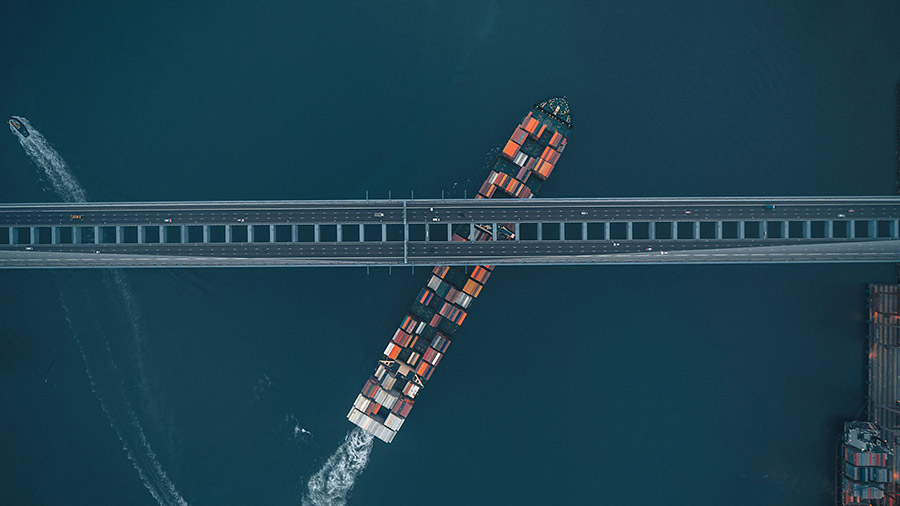Mergers and Acquisitions in China have undergone significant transformation, reflecting the country's economic evolution and global integration. Initially dominated by state-driven initiatives, the Chinese M&A scene is now a vibrant hub of private sector activity. This shift is a testament to China's liberalizing economy and integration into the global market. The increasing participation of multinational corporations and the rise of Chinese firms as international players are noteworthy trends in this evolution.
China’s M&A market
China's mergers and acquisitions (M&A) market has witnessed significant growth in both volume and value through 2021 and into the first quarter of 2022, fuelled by government policies and industrial upgrade programs. This growth trend has opened opportunities for foreign investors. Despite economic disruptions from COVID-19 and geopolitical events, the market remains active with corporate reorganizations and strategic changes aimed at capacity enhancement, sector diversification, and meeting ESG goals. In 2021, the M&A activity in China hit a new high with 12,790 deals, showing a 21% increase from the previous year, although deal prices saw a 19% decline. Private equity funding played a prominent role in sectors aligned with significant domestic economic objectives. However, the market faces challenges due to geopolitical crises, turbulent market conditions, and the aftermath of the COVID-19 pandemic, leading to a more cautious approach to transactions.
In the near future, China's M&A potential remains high due to the country's rapid economic development and the availability of liquid funds for financial sponsors. The renewable energy sector is emerging as a new hotspot for M&A activity, driven by China's commitment to carbon neutrality. This shift is evident in the significant capital inflow and increased deals in the sector. Additionally, the digital industry in China is setting new records in M&A, driven by strong demand for technology and data-driven assets. Private equity funds and venture capital are becoming more active, particularly in the technology, industrial, and consumer sectors.
Meanwhile, regulatory developments, including antitrust and national security reviews, are increasingly impacting M&A transactions, requiring careful consideration of regulatory trends and risk management in deal-making. Despite some economic headwinds, the private equity fund business remains robust, with ample capital available for investment.
Legal and regulatory framework in China
The Ministry of Commerce (MOFCOM) is the primary regulatory and approval authority for cross-border mergers and acquisitions (M&A). The M&A Rules were a big step forward in China's regulation of foreign acquisitions of Chinese enterprises.
Scope
The M&A Rules in China apply to both Equity Acquisitions and Asset Acquisitions:
- Equity acquisitions include foreign investors buying equity in domestic companies or subscribing to new shares, resulting in the conversion to a Foreign-Invested Enterprise (FIE).
- Asset acquisitions involve foreign investors establishing an FIE to operate assets purchased from a domestic enterprise or directly purchasing assets from a domestic enterprise to invest in an FIE.
Primary Regulations in Chinese M&A
Measures for Security Review of Foreign Investment: This regulation outlines the procedures and responsibilities for scrutinizing foreign investments in terms of national security. The NDRC and MOFCOM jointly lead the working mechanism office, which conducts these security reviews. The review process is categorized into two distinct types: general and special review. These reviews apply to foreign investments in various critical sectors, including:
- The military and related industries;
- Areas near military or military-related facilities;
- Vital agricultural products; and
- Other key industries such as finance, the internet, high-tech, and similar sectors.
Chinese Company Law (2018): This law governs the formation and corporate actions of both local and foreign-invested companies in China. It includes provisions on capital changes, methods of capital injection and debt assignments, etc. during company mergers or consolidations. In addition, the revised version of Company Law (2023) will become effective from 1 July 2024.
Negative List for Market Access (2022): Updated periodically, this List categorizes industries into permitted and prohibited sectors for foreign investment. Prohibited industries often include news editing and broadcasting, disclosing dangerous goods-related information online, etc. Foreign investors can enter other areas freely that do not fall under the above list.
Interim Provisions on Takeover of Domestic Enterprises by Foreign Investors (2006, revised 2009): These provisions define the takeover process and stipulate compliance with Chinese laws on investor qualifications and industry-specific policies. Key highlights include the need for approval from the Ministry of Commerce and registration with the State Administration for Industry and Commerce (SAIC). However, to ease the investing environment, local practice updates from time to time. Approval from MOFCOM has been waived in most of the industries.
Anti-Monopoly Law (2022) The updated Anti-Monopoly Law increases penalties for illegal business consolidations and provides a more precise definition of "control." Additionally, it permits AMR and its regional affiliates to establish and modify the thresholds that initiate regulatory action, as seen in the recent draft amendments.
Government Approval Process
The approval process typically involves simultaneous steps:
- Compliance with the Foreign Investment Enterprise Approval (for special industries).
- Adherence to the Chinese Company Law.
- Consultation of the Negative List for Market Access to determine industry categorization.
- Following the Interim Provisions on Takeover of Domestic Enterprises by Foreign Investors for takeovers.
- Establishing FIEs as per the Company Law.
- Filing a report with the Anti-Monopoly Bureau under the Anti-Monopoly Law for relevant transactions (if applicable).
Special Considerations for State-Owned Enterprises
M&As involving Chinese State-Owned Enterprises (SOEs) require additional regulatory compliance:
- Examination of SOE Acquisitions: Transactions involving control over state-owned assets must be examined by authorities as per the 2006 Interim Provisions.
- Approval from State Asset Supervision and Administration Commission: Necessary when the transfer of state-owned equity results in loss of controlling interest by China.
- Assessment of State-owned Assets: Prior valuation and assessment are required for state-owned assets involved in transactions.
- Local Government Approval for State-owned Asset Transfer: As mandated by the 2008 Law on the State-Owned Assets of Enterprises, transfers of state-owned assets require local government approval.
Regulatory Trends
Over the past three years, new regulatory trends have emerged, significantly impacting the M&A market in China:
Data Compliance
Data compliance has become critical, especially for enterprises with significant data assets. This includes ensuring data compliance during the M&A due diligence process and managing data post-transaction. Enterprises should conduct regular data compliance audits to avoid potential risks and valuation impacts.
ESG
The growing importance of ESG is influencing M&A deals. Companies increasingly integrate ESG into their corporate strategies, and due diligence processes reflect this shift. Businesses in sectors with high ESG compliance requirements must effectively spot ESG gaps in target companies to avoid additional costs and penalties.
Antitrust Review
Antitrust review is a critical legal and regulatory condition for M&A completion. With China's intensified efforts in antitrust enforcement, transactions meeting certain thresholds must undergo antitrust review by the State Council's anti-monopoly enforcement agency. Failure to comply can lead to significant penalties and corrective measures.
Types of M&A transactions
|
Classification Criteria |
Type of M&A |
Definition |
|
The industry relationship between the two parties in the deal |
Horizontal M&A |
Applicable when both parties are in the same industry |
|
Vertical M&A |
Applicable when the two parties are in the different streams of the industrial chain |
|
|
Hybrid M&A |
Applicable when both parties belong to different industries and have no relationship in the same industrial chain |
|
|
The change of status of legal entities of both parties after the deal |
Merger by absorption |
Only the merging party remains after the transactions are completed |
|
Consolidation |
Both parties dissolve the company and re-establish a new legal entity after the transaction is completed |
|
|
Whether the M&A obtains the consent of the target company |
Friendly M&A |
Acquired with the consent of the target company |
|
Hostile M&A |
Acquired without the consent of the target company |
|
|
The method of the acquisition |
Bilateral negotiation |
Acquired through M&A agreement |
|
Tender offer |
Acquired through a public offer issued to the shareholders of the target company |
|
|
Centralized trading of securities at competing prices |
Acquired through equity interests in the secondary stock market |
|
|
Auction |
Acquired through a judicial auction process |
|
M&A in China: Step-by-step
Mergers and acquisitions (M&A) in the People's Republic of China typically follow a structured process. Here's a general step-by-step overview:
Preparation and Planning
- Conduct initial research and background checks to identify potential targets or buyers.
- Define strategic objectives and potential collaboration.
- Assess regulatory landscape and compliance requirements in China.
Initial Contact:
- Initiate contact with the target's management or potential buyers.
- Exchange preliminary information under confidentiality agreements.
Letter of Intent (LOI):
- Draft and negotiate a Letter of Intent (LOI) outlining the proposed terms.
- The LOI typically includes the transaction structure, price, and exclusivity period.
Due Diligence:
- Conduct thorough due diligence covering legal, financial, operational, and compliance aspects.
- Identify any potential risks or liabilities.
Valuation:
- Perform a detailed valuation of the target company.
Negotiation and Structuring:
- Negotiate the terms of the deal, including purchase price, payment structure, and warranties.
- Decide on the structure of the acquisition (share vs. asset purchase).
Drafting Agreements:
- Prepare definitive transaction documents such as the Share Purchase Agreement or Asset Purchase Agreement.
- Include detailed terms agreed upon during negotiations.
Regulatory Approvals and Compliance:
- Seek necessary approvals from relevant authorities, such as the Ministry of Commerce (MOFCOM) and the State Administration for Market Regulation (SAMR).
- Ensure compliance with Chinese laws, including antitrust and foreign investment regulations.
Closing:
- Finalize and execute the transaction documents.
- Transfer funds and assets and make necessary registrations and filings.
Post-Merger Integration:
- Implement integration plans for merging operations, systems, and cultures.
- Address any post-closing adjustments or obligations as specified in the agreements.
Monitoring and Evaluation:
- Monitor the performance of the merged or acquired entity.
- Evaluate the success of the transaction against initial objectives and targets.
It's important to note that M&A transactions in China can be complex, often requiring navigation of a unique regulatory environment and cultural considerations. Professional advice from legal, financial, and M&A experts familiar with Chinese practices is highly recommended.
Frequently Asked Questions
What are the key trends and developments in China's M&A market?
China's M&A market has seen significant growth in volume and value, with a notable rise in 2021 despite economic disruptions. The market is increasingly driven by private equity funding and is seeing growth in sectors like renewable energy and digital industries. Despite challenges from geopolitical and market conditions, China's M&A potential remains high, influenced by rapid economic development and substantial domestic economic objectives.
How does the legal and regulatory framework impact M&As in China?
The Ministry of Commerce (MOFCOM) is China's primary regulatory body for cross-border M&As. The M&A Rules and other regulations like the Anti-Monopoly Law and the Measures for Security Review of Foreign Investment play a crucial role in shaping foreign acquisitions and investments. These regulations ensure compliance with national security and antitrust laws, affecting both Equity and Asset Acquisitions.
What are the common types of M&A transactions in China, and how do they differ?
M&A transactions in China vary based on industry affiliation, changes in legal status post-deal, and acquisition methods. They include horizontal, vertical, and hybrid mergers and mergers by absorption consolidation based on different classification criteria. The transactions can be friendly or hostile and may involve public offers, stock market purchases, or auctions.
What are the steps involved in the M&A process in China?
The M&A process in China involves preparation and planning, initial contact, drafting and negotiating an LOI, due diligence, valuation, negotiation and structuring, drafting agreements, obtaining regulatory approvals, closing, post-merger integration, and monitoring and evaluation. Each stage requires careful consideration of China's unique regulatory and cultural landscape.
What special considerations exist for M&As involving State-Owned Enterprises (SOEs) in China?
M&As involving SOEs in China require additional regulatory compliance, such as examination of SOE acquisitions, approval from the State Asset Supervision and Administration Commission, and local government approval for state-owned asset transfers. These transactions are subject to stringent reviews and valuations to ensure proper handling of state-owned assets.






















